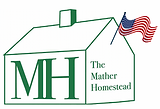Widowed or Divorced? Propriety and Necessity in the 1800s
- Mather Homestead Foundation
- Oct 28
- 2 min read
If you’ve watched The Gilded Age, you know the social stigma associated with divorce in that era. In circles of less scrutiny, it was not uncommon for women to declare that they were widowed and omit mention of a marital separation of dissolution. For genealogists, this expediency often comes to light when reviewing census records.
In researching more limbs of Deacon Joseph Mather’s family tree, just such an instance appears.
Moses Selleck was a great-grandson of Deacon Mather His grandmother was Hannah Mather Selleck, his mother was Polly Selleck, his father was Lewis Selleck. (Yes, a Selleck married a Selleck—small dating pool in 1823!)
Born 9 October 1838, Moses married Sarah Raymond on Christmas Day 1860. The 1870 census shows Moses and Sarah in Brooklyn with two boys, Wilber and J. Howard, and Sarah’s father Philander Raymond. Moses’ occupation is a carpenter. We don’t have another census for Moses until 1900 when he is living in Huntington, Long Island with his wife Elizabeth (Richardson) and his occupation is house carpenter. The same information appears on the 1910 census.
For Sarah, on the 1880 census, she is living in Brooklyn, with the two boys, and her mother, Matilda. Her occupation is “keeping confectionary” and she is “widowed.” In the 1900 census, she is in San Francisco, living with her brother, “widowed” and indicates that one of her sons has passed away. (Howard died in 1890 and is buried in Norwalk Union Cemetery.) By 1910 she is living as a lodger on Folsom Street in San Francisco, and remains “widowed.”
Elizabeth Richardson Selleck died in 1912. Moses died on 30 Jan 1917, and the “widow” Sarah outlived them both, passing away in January 1924.








Comments